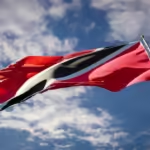The Shamil Basayev terror group has been a significant and controversial figure in global terrorism history, particularly associated with the conflict in Chechnya and broader issues of Islamist extremism. This article explores the origins of the Shamil Basayev terror group, its major operations, ideological foundation, and the global ramifications of its activities. By examining these key points, readers will gain an informed understanding of one of the most notorious terror groups of the late 20th and early 21st centuries.
Introduction: Who Was Shamil Basayev?
Shamil Basayev, a Chechen military commander and warlord, was one of the most notorious leaders of the Chechen separatist movement. He rose to prominence during the First and Second Chechen Wars, which were brutal and complex conflicts between Russian forces and Chechen rebels. Basayev’s name became synonymous with extreme violence, terrorism, and resistance to Russian rule.
Basayev’s radicalization was fueled by a combination of personal experiences, political ideologies, and the deep-rooted animosities between Chechens and Russians. Over time, he became the leader of various militant factions, gaining support from Islamist extremists both within and outside the Caucasus region. His group carried out numerous high-profile attacks, which included bombings, hostage takings, and armed assaults, all of which drew global attention.
In this article, we will examine the formation of the Shamil Basayev terror group, its operations, and its eventual dissolution after Basayev’s death in 2006. We will also compare this terror group with other notorious organizations to better understand its methods, goals, and global impact.
Origins of the Shamil Basayev Terror Group
The origins of the Shamil Basayev terror group are tightly interwoven with the broader context of the Chechen Wars. The First Chechen War, which lasted from 1994 to 1996, was a conflict between Russian Federation forces and Chechen separatists who sought independence from Moscow’s control. During this war, Basayev gained considerable notoriety due to his leadership and military prowess.
After the war ended in a ceasefire, Chechnya was left in a state of turmoil. The political vacuum created by the collapse of the Russian-backed Chechen government and the rise of radical Islamist movements set the stage for Basayev to increase his influence. He began recruiting fighters from within Chechnya, the wider North Caucasus, and other parts of the Muslim world, who were motivated by ideological, ethnic, and religious factors.
During the Second Chechen War (1999-2009), which broke out following a series of bombings in Russia that were blamed on Chechen separatists, Basayev emerged as one of the key figures leading attacks against Russian forces. This period marked the full militarization of his operations, and it is during this time that the Shamil Basayev terror group truly solidified its reputation for violence.
Key Operations and Attacks
The Shamil Basayev terror group was responsible for some of the most shocking and devastating terrorist attacks in the post-Soviet space. Here are some of the most notable operations that are attributed to the group:
- The 2002 Moscow Theater Hostage Crisis
In October 2002, Basayev’s forces carried out a highly coordinated attack by taking over 800 hostages in a Moscow theater. The group demanded the withdrawal of Russian troops from Chechnya. The situation escalated when Russian security forces stormed the theater, resulting in the deaths of at least 130 hostages and several of the attackers. This event brought global attention to the group’s methods and the brutal nature of its tactics. - The 2004 Beslan School Siege
Perhaps the most infamous act attributed to the Shamil Basayev terror group was the 2004 Beslan school hostage crisis. Basayev and his associates took more than 1,000 people, including children, hostage in a school in Beslan, North Ossetia. The siege ended in a violent confrontation with Russian forces, leading to the deaths of 331 people, including 186 children. This attack was a horrifying display of the group’s willingness to target civilians in order to further its political and religious goals. - Bombings and Assassinations
The Shamil Basayev terror group was also responsible for a series of bombings throughout Russia, targeting civilian infrastructure, government buildings, and military targets. These bombings served to destabilize Russian authority and to send a message of resistance against Moscow’s control over Chechnya. - The 1999 Dagestan Invasion
In 1999, Basayev’s group, alongside other Islamist militants, invaded the neighboring Russian republic of Dagestan in an attempt to spread the Chechen separatist cause.
Ideology of the Shamil Basayev Terror Group
The ideology of the Shamil Basayev terror group was rooted in a combination of nationalism, religious extremism, and anti-Russian sentiment. At its core, the group sought to establish an independent Islamic state in Chechnya. One that adhered to a strict interpretation of Sharia law.
Basayev’s alignment with radical Islamist groups became clearer over time. Particularly after his association with al-Qaeda and other global jihadist organizations. Basayev sought to frame the Chechen struggle as part of a larger global war between Islam and the West, positioning himself and his fighters as part of a global jihad. This ideological shift marked a departure from the more secular nature of the initial Chechen separatist movement and placed Basayev’s group squarely in the ranks of Islamist extremism.
Moreover, Basayev and his followers were heavily influenced by the concept of “martyrdom” and the belief that violence against Russian force. And anyone perceived as supporting Russian rule—was justified in the pursuit of their religious and political goals. This extremism was in stark contrast to the more moderate factions of the Chechen resistance. Which sought independence without resorting to terrorism.
The Demise of the Shamil Basayev Terror Group
The Shamil Basayev terror group continued its activities throughout the early 2000s. But the group’s momentum began to slow after Basayev’s death in 2006. Basayev was killed in a Russian military operation, which effectively dismantled the core leadership of the group. Despite his death, the group’s influence persisted for some time. As other militant factions continued to carry out attacks in Chechnya and the surrounding regions.
Following Basayev’s death, the Russian government focused its efforts on combating remaining separatist factions in Chechnya. Although the violence in the region has decreased since then, the legacy of Basayev’s radicalism remains influential in some extremist circles.
Shamil Basayev Terror Group vs. Other Terrorist Organizations: A Comparative Analysis
To understand the scale of the Shamil Basayev terror group’s activities, it is helpful to compare it with other notorious terrorist organizations. Below is a comparison chart that highlights key differences and similarities between Basayev’s group and other prominent terror groups such as al-Qaeda, the Taliban, and ISIS.
| Characteristic | Shamil Basayev Terror Group | Al-Qaeda | Taliban | ISIS |
| Region of Operation | Chechnya, North Caucasus | Global (Middle East, Africa, South Asia) | Afghanistan, Pakistan | Global (Middle East, North Africa, Europe) |
| Core Ideology | Islamist extremism, Chechen nationalism | Jihadist Salafism, Global Caliphate | Strict interpretation of Sharia, Pashtunwali | Radical Salafism, Establishment of Caliphate |
| Key Tactics | Terrorism, hostage taking, bombings | Terrorism, hijackings, bombings, assassination | Guerrilla warfare, terrorist attacks | Terrorism, beheadings, massacres, recruitment via social media |
| High-Profile Attacks | Moscow Theater Hostage Crisis, Beslan School Siege | 9/11 Attacks, Bali Bombings | 2001 September Attacks, Kabul 2021 Takeover | Paris Attacks, 2015-16 Iraq-Syria Campaign |
| Leadership Structure | Leader-centric, Basayev as key figure | Decentralized, Bin Laden & Zawahiri | Centralized, Mullah Omar | Centralized, Abu Bakr al-Baghdadi |
| Current Status | Dismantled after Basayev’s death | Still active, though weakened | Taliban controls Afghanistan (as of 2021) | Defeated in territorial control but remains a threat |
Global Impact and Ramifications
The Shamil Basayev terror group had a profound impact on both regional and global security. On a local level, its attacks contributed to the perpetuation of violence in the North Caucasus, destabilizing the region for years. Its use of terrorism as a political tool inspired other extremist groups operating in the region and abroad.
Internationally, the group’s connections to al-Qaeda and other jihadist networks solidified its role within the larger context of global terrorism. The group’s tactics, particularly its use of hostages and indiscriminate violence. Served as a grim blueprint for other terrorist groups, including ISIS.
Conclusion: The Legacy of the Shamil Basayev Terror Group
While the Shamil Basayev terror group no longer exists in its original form, its legacy lives on in the global fight against terrorism. Its violent tactics, ideological stance, and association with al-Qaeda have left an indelible mark on both the Chechen conflict and global security.
By studying the history of the Shamil Basayev terror group. We can better understand the complexities of the region and the motivations behind extremist violence. It also serves as a cautionary tale about the dangers of radicalization and the importance of addressing the underlying political, social. And ideological grievances that fuel such movements.











